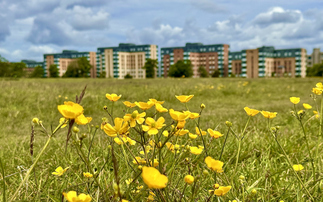
Industry Voice: A recent study by Boston Consulting Group underscores the huge economic value created through biodiversity — and how pressures on natural ecosystems poses risks to business growth
The value of biodiversity to business
Biodiversity is at the heart of all human life and activity. It feeds us, provides clean air and water, and stores carbon. In all, it provides services worth more than $150tr a year, about twice the value of global GDP.
That means it has massive implications for business, not least because biodiversity is being destroyed at an alarming rate.
Biodiversity is reflected in the diversity of life at three levels - ecosystems, species and genetic variability. And it provides vital services to society and the economy including:
- Regulating environmental stability, e.g. climate, water, air, disease
- Cultural, spiritual, education and recreation needs
- Habitats for plants, animals and micro-organisms vital to soil health and food production
- Goods such as food, timber and medicinal ingredients
The business risks of biodiversity
Yet lost ecosystem services cost the global economy more than $5tr a year already and business activities, from resource extraction to agriculture, are major contributors to that loss. Four key value chains - food, energy, infrastructure, and fashion - drive more than 90% of man-made pressure on diversity.
In the food sector, which accounts for more than half of this pressure, deforestation, overfishing and plastic waste are among the biggest issues, while energy impacts come from pollution and greenhouse gas emissions.
Business is not only contributing to the ongoing degradation of the natural world—but also faces significant risk as a result of it, including higher raw material costs and increased pressure from consumers and investors.
As governments recognise these risks, regulation is increasing. In addition, costs for natural inputs may increase in the future. And companies that fail to address the impacts of their business on biodiversity may see a diminished license to operate.
What are the opportunities for businesses to lead on biodiversity?
The good news for companies is that supporting biodiversity will also create opportunities to develop new products and business models, enhance existing products and cut costs. For example, companies that lead on biodiversity will find opportunities to enter new markets, meet public demand for more sustainable products and increase their access to capital while cutting raw material and energy costs.
To build a biodiversity-positive business, Boston Consulting Group recommends a four-stage approach.
- Determine the scope of action - identify and prioritise key ecosystems and issues, set strategic objectives and develop a narrative to guide your strategy
- Set science-based targets, establish a system to measure progress and disclose that progress
- Educate employees and business partners about biodiversity; integrate biodiversity targets with existing mechanisms; and seek partnerships to maximise impact
- Identify the right initiatives in three areas: managing your footprint to reduce your impact; innovating to develop new biodiversity-friendly products and services; and adopting a stewardship role beyond your core business.
Some companies will have an outsized impact on biodiversity because of the position they hold in their value chain. For example, suppliers of machinery and agricultural inputs such as seeds and fertiliser are in a strategic position to influence the activities of farmers and fisheries. But no matter where they sit in the value chain, companies must move beyond mere declarations of intent and actually deliver meaningful and locally measurable benefits for ecosystems.
What are the drivers of biodiversity loss?
There are five primary drivers of biodiversity loss - change in land and sea use is the biggest single factor, followed by direct overexploitation of natural resources as mankind takes out of the natural environment more animals, plants and other resources than can be naturally replaced. At the same time as taking out more than is sustainable, we also pollute the soil, water and air.
Invasive plants, animals and other organisms can destabilize entire ecosystems, while the impacts of climate change not only damage ecosystems themselves but exacerbate other pressures, through extreme weather events, rising ocean acidification. As ecosystems degrade, they release more carbon, adding to climate change.
This article is sponsored by Boston Consulting Group.







